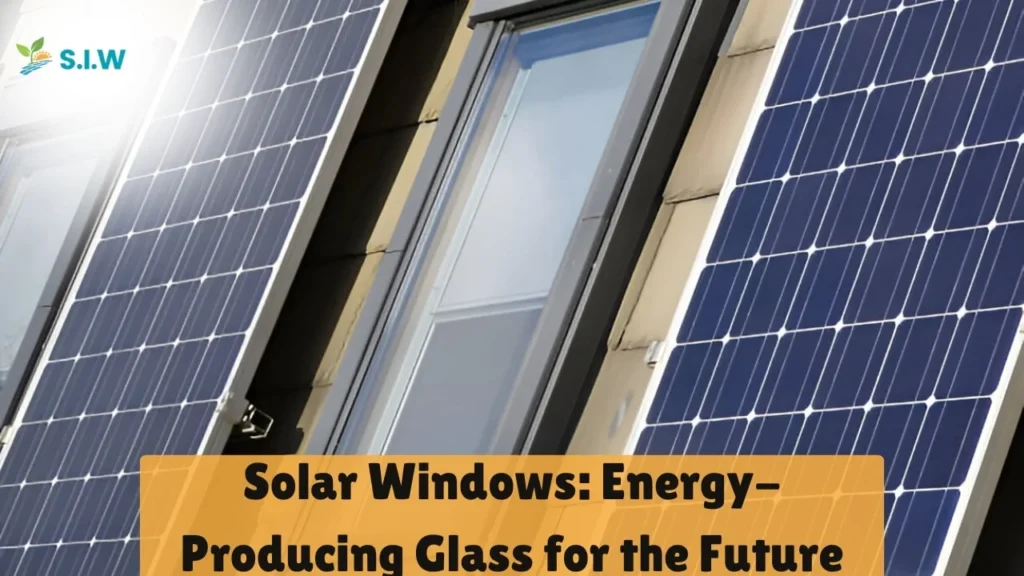Imagine a world where your windows don’t just let sunlight in—they actually use that light to generate electricity. Solar windows are an emerging technology that promises to make this possible. These special windows have transparent solar cells embedded in the glass, allowing them to harness solar energy while remaining clear enough to be used like any other window.
The potential impact is huge. Skyscrapers, homes, and office buildings could soon have solar windows, turning everyday structures into energy powerhouses.
The Technology Behind Solar Windows
Solar windows use photovoltaic (PV) technology, much like traditional solar panels. The key difference is that solar windows use a transparent version of these solar cells. This innovation lets light pass through the glass while still capturing enough of it to generate power.
These transparent PV cells are made from organic or perovskite materials, which can be designed to absorb specific wavelengths of sunlight while allowing visible light to pass through. This is how solar windows maintain their transparency while producing energy.
Benefits of Solar Windows
Solar windows offer several distinct advantages over traditional solar panels:
- Space Efficiency: Unlike rooftop solar panels, which take up additional space, solar windows use existing building surfaces. This is especially useful in urban environments where space is limited.
- Aesthetic Appeal: Solar windows are nearly indistinguishable from regular windows, making them an attractive option for architects and homeowners alike.
- Energy Efficiency: Not only do they generate electricity, but solar windows also help regulate indoor temperatures by filtering sunlight, reducing the need for air conditioning.
Challenges Facing Solar Windows
Despite the excitement, solar windows aren’t yet widespread. One challenge is efficiency. While traditional solar panels can convert about 15-20% of sunlight into electricity, solar windows are currently less efficient, usually converting about 3-5%. Researchers are working hard to improve this, but it’s a significant hurdle.
Another issue is cost. Solar windows are still expensive to produce, and retrofitting existing buildings with this technology is a costly endeavor. However, as technology advances and economies of scale take hold, the price of solar windows is expected to drop.
Real-World Applications
While solar windows are still in the early stages, several buildings around the world are already testing this technology. The potential applications are exciting:
- Skyscrapers: Tall buildings with lots of windows could use solar windows to generate a significant amount of energy without needing additional rooftop space.
- Homes: Homeowners could replace their regular windows with solar windows, lowering their energy bills and making their homes more sustainable.
- Cars: Some companies are even exploring the possibility of using solar windows in cars to power electronic systems and reduce the strain on the battery.
Personal Experience: Exploring Solar Innovation
I first learned about solar windows during a visit to a sustainable energy expo. Seeing these transparent solar cells embedded in glass was like peering into the future. I remember thinking about how buildings in big cities could one day produce their own electricity simply by existing. That idea inspired me to follow the development of this technology closely.
While we’re not there yet, I believe that solar windows could one day become as common as regular windows, powering homes, offices, and even schools.
Kinetic Solar Asphalt Roof Flashing
Solar technology isn’t limited to windows. Innovations like kinetic solar asphalt roof flashing are making buildings even more energy-efficient. This technology combines solar cells with kinetic energy capture, generating power from both sunlight and movement.
The combination of solar windows and other innovations like this could make entire buildings self-sustaining in terms of energy.
The Future of Solar Technology
The future of solar windows is promising, but it’s not the only exciting development in solar energy. Products like the 3000-watt solar charger are making it easier for people to power their devices off-grid. Combined with solar windows, these technologies represent a shift toward renewable, decentralized energy production.
Meanwhile, solar services in the USA are expanding rapidly, offering homeowners and businesses more opportunities to install solar panels or even replace their traditional windows with solar windows. The growing industry is paving the way for widespread adoption.
Frequently Asked Questions (FAQs)
- How much energy can solar windows generate?
Solar windows typically generate less energy than traditional solar panels. Their efficiency is around 3-5%, but this number is expected to rise as the technology improves. - Are solar windows expensive?
Yes, currently, solar windows are more expensive than traditional windows. However, as the technology advances, the price will likely decrease. - Can solar windows work in any climate?
Yes, solar windows can work in various climates, though their efficiency will depend on the amount of sunlight available. They perform best in sunny regions. - Do solar windows block natural light?
No, solar windows are designed to allow natural light to pass through, just like regular windows, while capturing energy from specific wavelengths of sunlight. - How long do solar windows last?
Like traditional solar panels, solar windows are designed to last for decades, though their efficiency may decrease slightly over time.
Solar windows represent the next step in the evolution of renewable energy. As researchers continue to improve their efficiency and lower their cost, we can expect to see them become a common feature in buildings worldwide. This new technology not only offers a solution to energy consumption but also has the potential to transform the very architecture of our cities.








